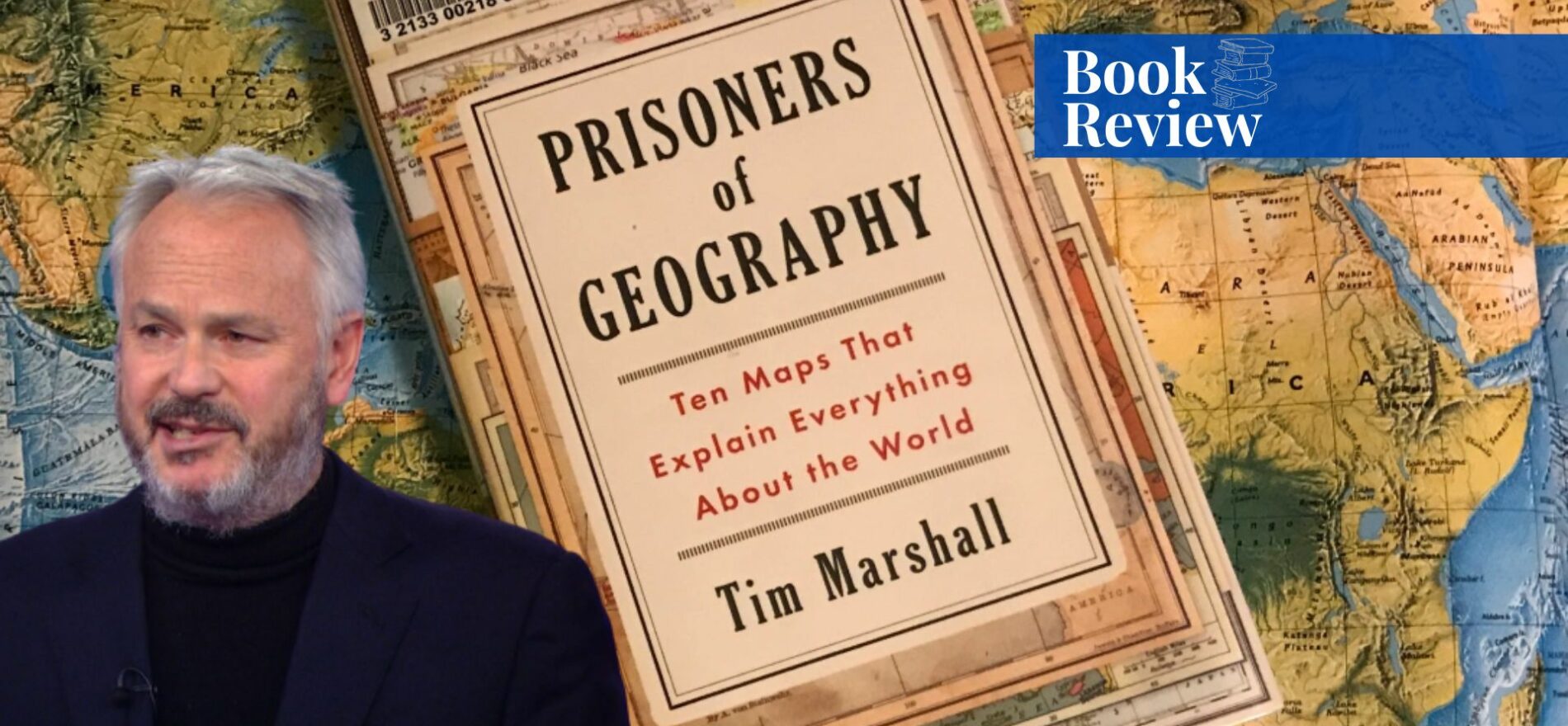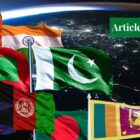Author
Tim Marshall, the author of the book “Prisoners of Geography: Ten Maps That Tell You Everything You Need to Know About Global Politics” is a British author, journalist and broadcaster who specializes in international affairs and diplomacy. He is also the guest commentator for BBC, Sky News, and LBC as well as a leading authority on foreign affairs with more than thirty years of experience.
Rapacious Russia
Prisoners of Geography is divided into ten interesting chapters with insights into states’ politics, economies societies and geographies. The first three chapters are about the key states of world politics: Russia, China, and the US. In the first chapter “Russia”, the author explores the territory of the Russian Republic under the leadership of Vladimir Putin.
Unlike other states that have natural borders of sea, mountains and deserts, the Russian southern border is one which welcomes the enemy from Europe to attack it, giving rise to the fear of being attacked i.e. ‘realism’ in terms of international relations. The book points out Ukraine, Georgia and Moldova as the key states in Russian security policy.
Curious China
In the second chapter named “China”, the book analyses the rise of China as the global hegemon whilst challenging the international status quo. In order to be a global power like the US, China has been following certain steps.
From using soft power like that of BRI to using hard power against Uighur, Hong Kong, Tibet and Taiwan, China is trying to influence the globe. Also, its presence in the Indo-Pacific Ocean is one of the ways to exercise its regional influence against India and kick the US out of the Asian region.
The United States
In the third chapter named “United States”, Tim Marshall discusses the lucky geography of the state which made it the global superpower. Prisoners of Geography also discusses the history of the US from being a colony of Britain to its way to independence in 1776. The view of its lucky geography changed after Japan attacked the US in World War II.
The attack compelled the US to get itself involved in the war militarily and be the cause of nuclear proliferation around the globe. After the war, many EU states started to rely on the US for their security and military needs which led to the creation of NATO in 1949. This bloc resulted in the creation of a security dilemma between the two leading states i.e. the US and the USSR.
The book also discusses the US involvement in Cuba, Vietnam, Afghanistan and Iraq. However, the main threat to the US hegemony is the rise of China and so in order to counter it, the US is making sure to win the trust of every state surrounding China. The US’s presence in Japan, Vietnam, and the South China Sea is a confirmation of that determination.
Western Europe
In the fourth chapter named “Western Europe”, the author discusses the difference between the US and Europe’s geography. Europe’s geography is designed in a way that it has divided the states and the people naturally through natural boundaries. In the case of the US, there are fewer natural borders inside the territory which gives it a homogenous population.
Prisoners of Geography also makes the comparison between the economy of Northern and Southern Europe, coming to the conclusion that the former is richer than the latter due to its fertility, borders, and resources. The financial crises after the two major wars in the region have led the states to better coordinate with each other which then resulted in the establishment of the EU.
Africa
In the fifth chapter of the book named “Africa”, Tim Marshall answers one of the key questions: why has Africa failed in both politics and technology unlike other continents of the world? In the answer, he points out two main reasons behind the failure. One is the ‘geographic factor’. Unlike Europe, Asia, or North America, which have rivers that connect each other, the utmost source of trade and interconnection between them, Africa lacks them. The continent’s great rivers do not meet each other which causes disconnection in the continent.
The other reason lies in the human factor. In Europe and North America, there is a unifying language of English that sustains human interaction but Africa does not possess it. The lack of a lingua franca has caused them to be separated from the continent. The chapter also analyses the ethnic conflicts, diseases, and fights for water among the states of Africa.
The Middle East
In the sixth chapter named “Middle East”, the author analyses the region of the centre of world politics. It is the longest chapter of the book which covers entirely every state of the region. Prisoners of Geography discusses the role of different branches of Islam in creating divisions among them.
The author has compared the Middle East pre and post-9/11, the rise of ISIS, the Islamic Cold War between Iran and KSA, the Palestine-Israel conflict, and the problems with Iraq, Syria, and Lebanon. The question of why Arab Spring 2011 failed has also been addressed.
Turkey has been called the moderate state in the Middle East and is also viewed as a competitor by Iraq, KSA, Israel, and Russia. It wants to regain the status that it previously had before World War I. The chapter also analyses the role of oil and gas in keeping the US and China in the region.
South Asia
In the seventh chapter named “India and Pakistan”, the author discusses the problem between both states. The fortunate geography of both states has been discussed in the chapter as how this geography compels China and US in those states. The enmity between the two states is not just over a piece of land i.e. Kashmir but also over the control of water flows i.e. the Indus River.
The chapter also discusses the role of Pakistan in the Afghan war against Americans, the British, and NATO, and in support of Taliban and Al-Qaeda. However, the separatist movements in India and their clashes with the neighbours like Bhutan and Nepal are discussed a little.
East Asia
In the eighth chapter named “Korea and Japan”, the author explores the clashes between Japan, North Korea, and South Korea. Korea has always remained in the hands of either China or Japan since World War II, but it fought a major war thus creating two lands across the 38th parallel by the United Nations.
On the other hand, Japan after being devastated by two nuclear bombs, was trained to be the permanent station for US naval bases in East Asia mainly in the South China Sea.
Latin America
In the ninth chapter named “Latin America”, Tim Marshall compares the geographies of Africa, and North and South America. He argues that the problems with South America and Africa are the same. Both continents have vast diverse populations and are rich in natural resources. Although states like Brazil, Mexico, Chile, and Peru appear to be wealthy, they cannot be compared to the US, the UK, or France.
The other problem is that these states have just defeated slavery and colonizers so they have a long way to development. All the states of Latin America are majorly under the influence of the US because of the Monroe Doctrine of 1823. The chapter discloses the major states of Latin America, their resources, problems, and US interests. However, the UK’s interest in the region is ignored.
The Arctic
In the last chapter named “The Arctic”, the author explores the regions and areas surrounded by the Arctic Ocean which are the United States, Canada, Norway, Finland, Greenland, Iceland, Russia, and Sweden. The temperature here reaches up to 26 degrees Celsius in the summer and falls up to -45 in winter.
The region is neglected security-wise because it is difficult to stand the chilly winters and safeguard the territory. However, the smuggling of goods from these areas is a common problem that all states face. The other major problem here is the melting of the ice due to global warming.
Conclusion
In the concluding note of the book, the author states that it is not just geography that shapes world politics, great ideas, and people also confine together in order to formulate it. However, that does not undermine the importance of geography which is continuing to predict the power politics around the globe.
The author has also highlighted the problem of climate change which would not only impact the geography of Earth but also its demography as well. The impact of climate change will not only affect Americans, Russians, and Chinese but would affect the whole of humanity.
If you want to submit your articles and/or research papers, please check the Submissions page.
The views and opinions expressed in this article/paper are the author’s own and do not necessarily reflect the editorial position of Paradigm Shift.














